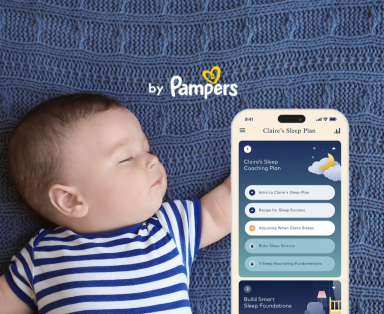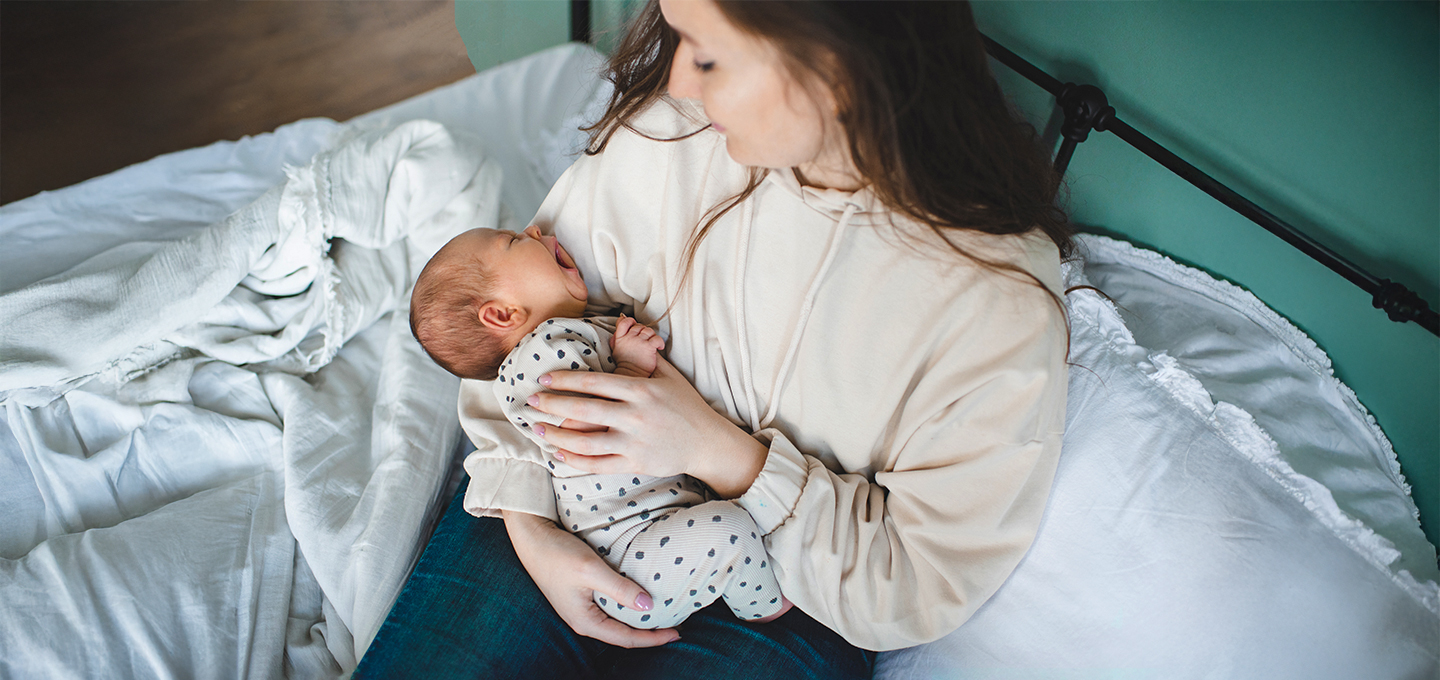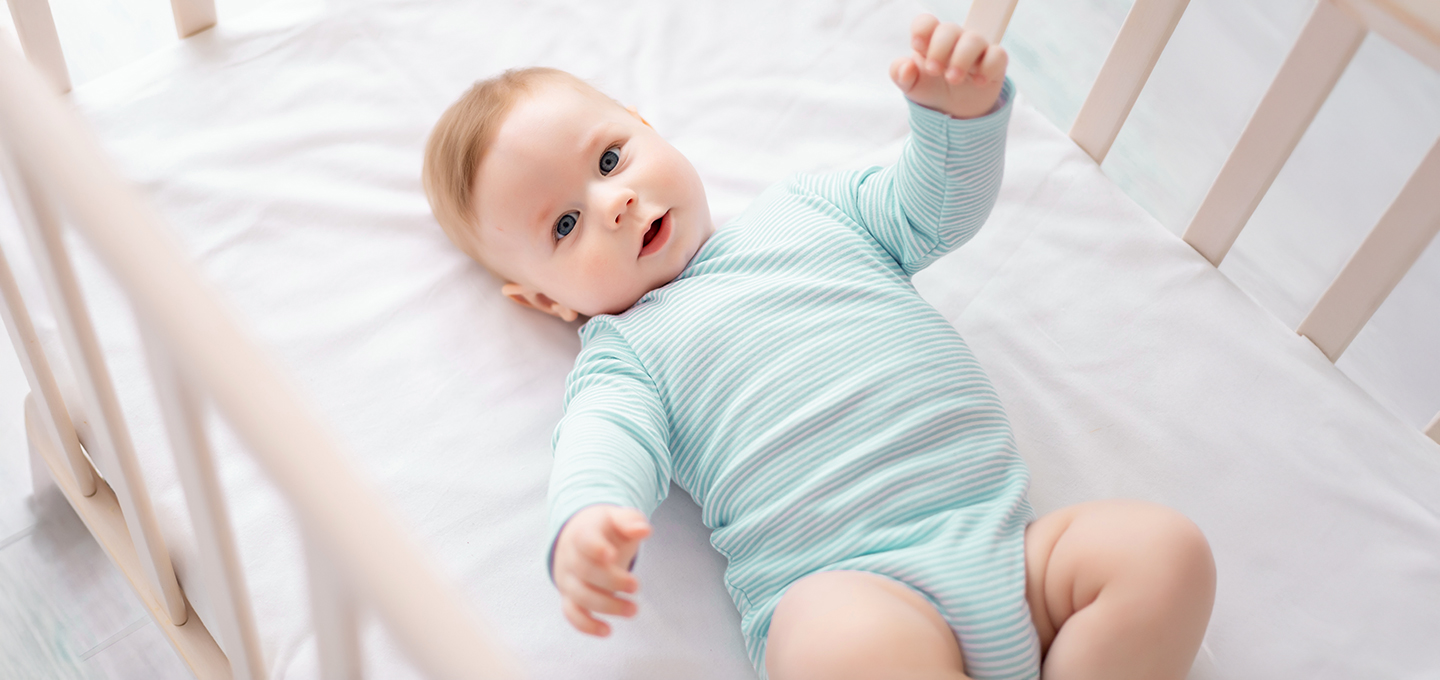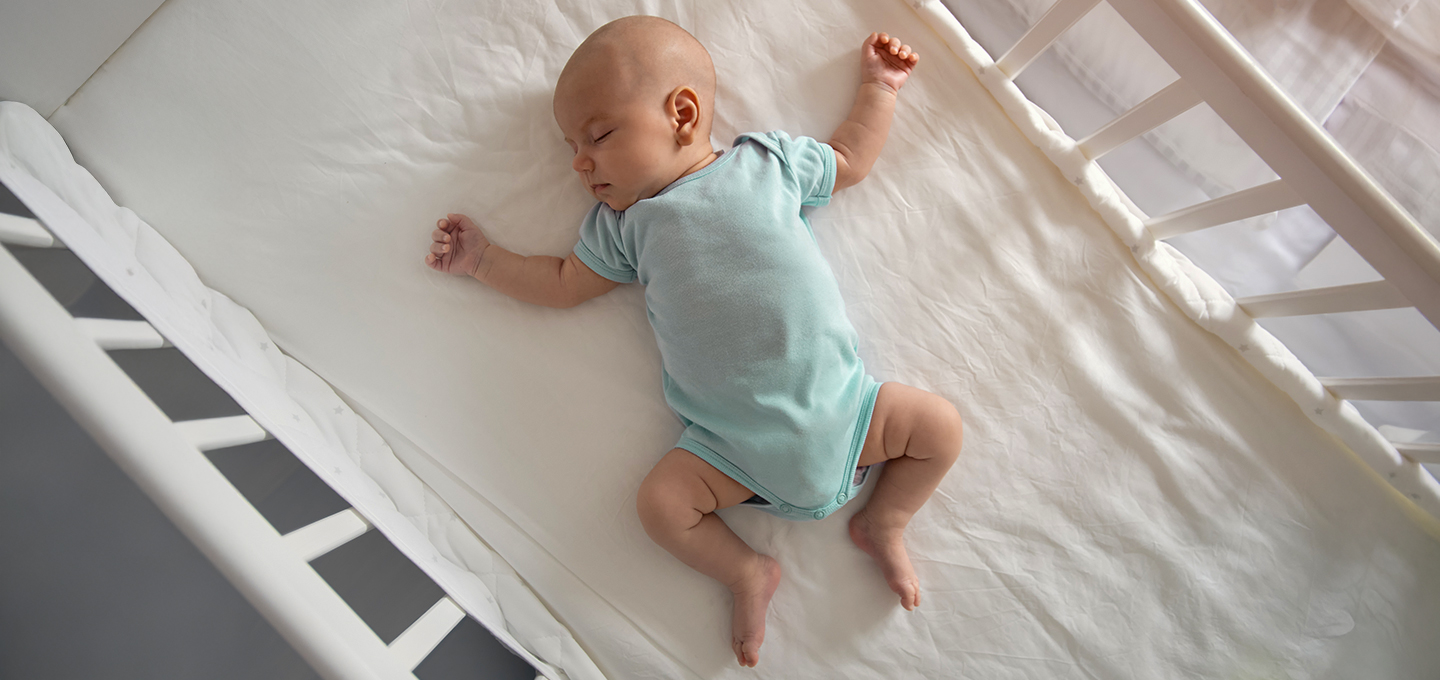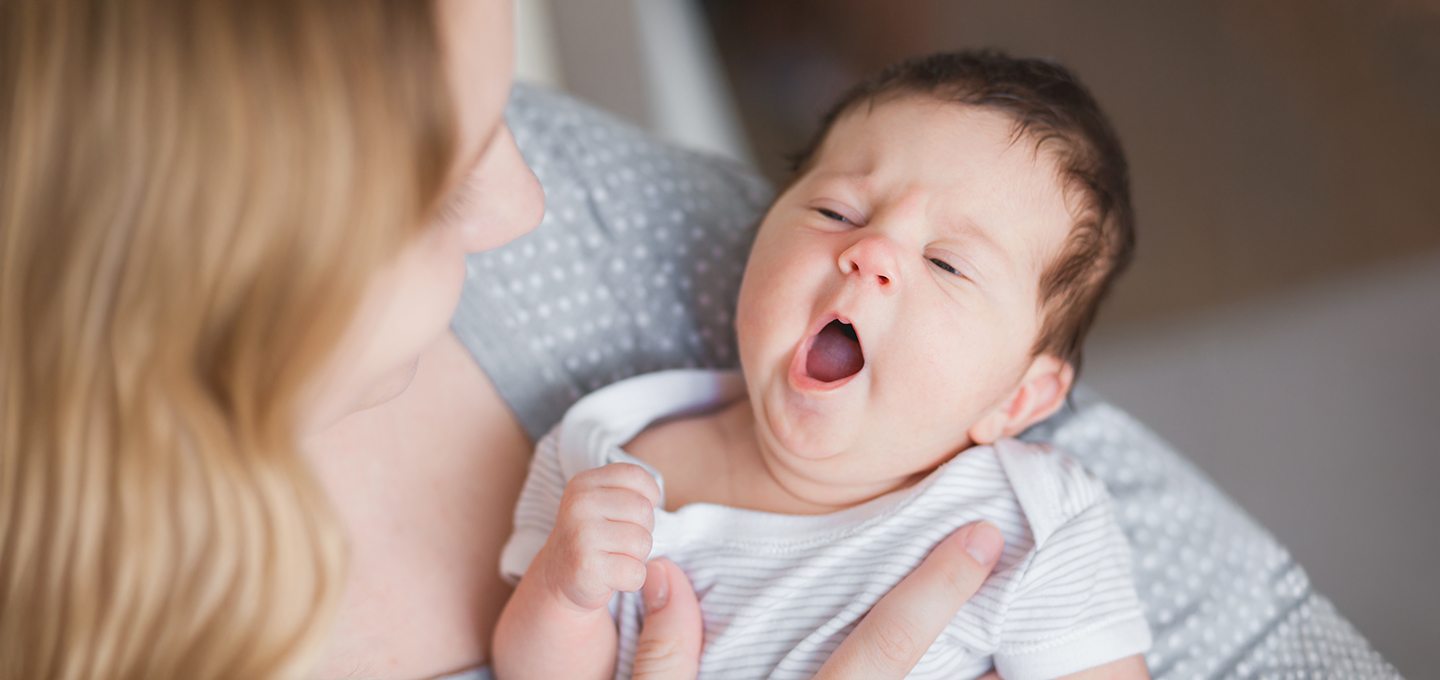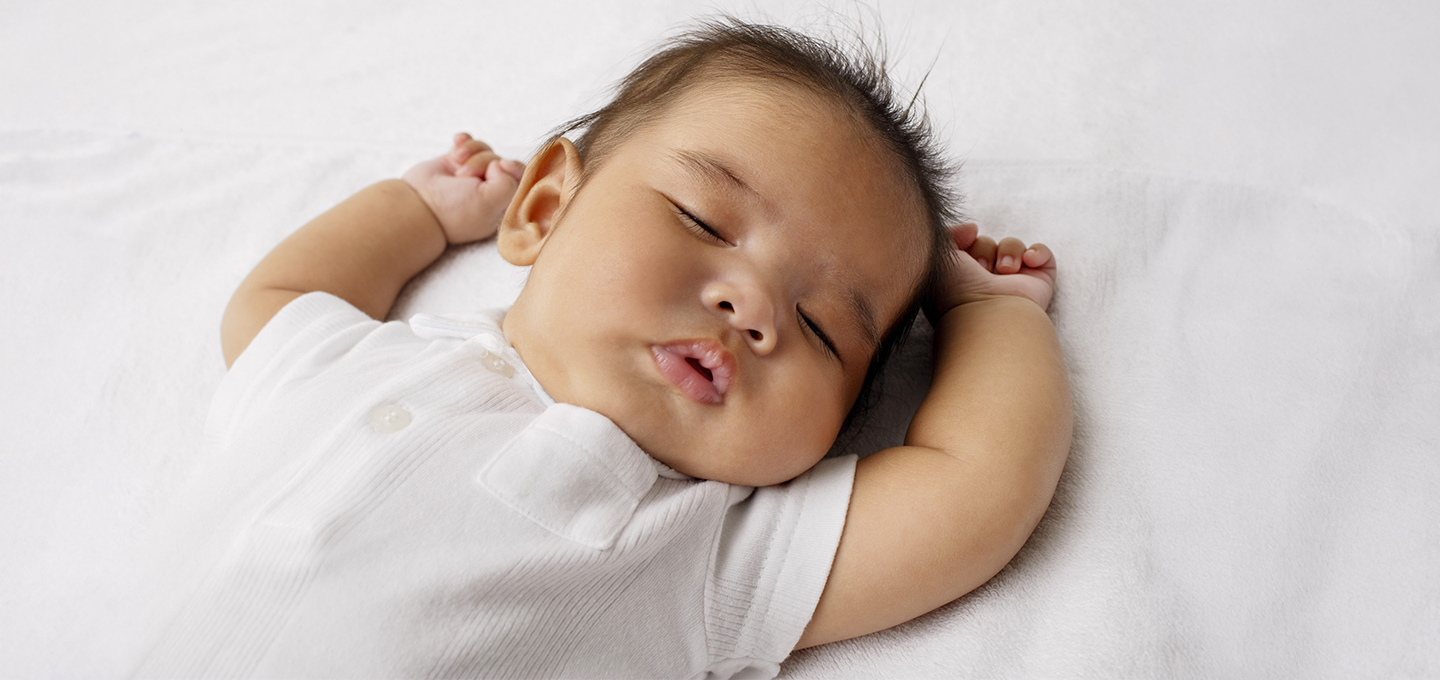
How Should Babies Sleep? Safe Sleep Tips for Babies
6 min readUpdated November 16, 2025

Chief Pediatric Sleep Consultant
6 min readUpdated November 16, 2025

Chief Pediatric Sleep Consultant
IN THIS ARTICLE
When you're caring for a newborn, sleep safety can feel overwhelming. You might find yourself wondering things like: “How should babies sleep?” “What do newborns sleep in?” or “Why can't babies sleep on soft surfaces?”
The good news is that creating a safer sleep environment doesn’t have to be complicated. By following a few simple, expert-backed infant safe sleep habits, you can help lower potential risks and feel more confident about your baby’s rest, day and night.
Here’s a quick summary of key guidelines:
By sticking with these proven habits, you can help your baby sleep safely and feel more confident as a parent or caregiver. In the sections that follow, we’ll explain each step in more detail to support you through every stage of safe sleep.
The Importance of Safe Sleep Habits
Practicing safe sleep habits helps protect your baby from potential dangers during naps or nighttime rest. These habits involve taking simple precautions to reduce the risk of falls, choking, suffocation, and SIDS (Sudden Infant Death Syndrome).
By following infant safe sleep strategies, you can create a safer sleep environment for your baby and help lower the chance of serious outcomes. Keep reading for practical tips and insights on how to support safe sleep from the newborn stage through early infancy.
Looking for extra support in building healthy sleep habits?
Try the Smart Sleep Coach, a personalized tool designed to guide your baby’s sleep journey with gentle, expert-backed techniques.
The Most Important Safety Tip: Put Your Baby to Sleep on Their Back
Every time you lay your little one down to sleep, whether it’s for a nap, bedtime, or a middle-of-the-night rest after feeding them, place them on their back. Starting sleep this way is one of the easiest ways to help your baby sleep safely from the start.
Back sleeping is considered the safest position because it helps reduce the risk of SIDS and accidental suffocation. As a general guideline, babies should continue sleeping on their backs until they turn one year old.
Can Newborns Sleep on Their Sides or Stomachs?
It’s natural to wonder, “Can infants sleep on their side or stomach safely?” The short answer is no—not during the early months. When babies are placed to sleep on their side or tummy, it increases the risk of suffocation, choking, and SIDS.
If you see your newborn has rolled onto their side or stomach, gently return them to their back. This precaution helps maintain a safe sleep environment in the early months.
Once your little one can independently roll over both ways—usually around 5 or 6 months—you don’t need to reposition them during sleep. At that point, their body has developed enough strength and control to sleep safely in the position they choose.
Sleeping in a Crib: Why It’s Safest for Your Baby
If you’ve been asking yourself, “What do newborns sleep in?” the safest options include a crib, bassinet, or a play yard approved for infant sleep. These provide firm, flat surfaces with no soft bedding, which is key for safe sleep.
While some parents start with a bassinet, you may begin wondering when a newborn should sleep in a crib. Many babies outgrow their bassinet within the first few weeks to a month, making the crib a natural next step. That said, it’s also perfectly safe to use a crib from day one.
Some families opt for convertible cribs that grow with their baby and can later be converted into a toddler bed, offering convenience and long-term use.
Why Can't Babies Sleep on Soft Surfaces?
A safe sleep space for your baby is firm, flat, and level, designed to reduce the risk of suffocation and other sleep-related dangers.
Here’s what to look for:
So, why can't babies sleep on soft surfaces? Soft areas like sofas, adult beds, memory foam, air mattresses, and quilted bedding increase the risk of suffocation, strangulation, or SIDS. These materials can trap a baby’s face or allow their head to slump forward, blocking their airway.
Avoid putting your little one to sleep on a couch, armchair, or adult bed, even if you're nearby. These surfaces are not designed for infant safe sleep, especially if you doze off while feeding or comforting your baby.
Unsafe Places for Babies to Sleep
Following the ABCs of safe sleep: Alone, on their Back, and in a Crib, also means understanding where babies shouldn’t sleep.
So, is it safe for a newborn to sleep in a car seat? Not really. While car seats are essential for travel, they’re not designed for extended or unsupervised sleep. Once you’re home or at your destination, gently move your baby to their crib or bassinet.
Babies should never sleep in your bed or on a couch, sofa, or armchair. These surfaces can be dangerous, as your baby could roll, get stuck, or suffocate on soft materials or gaps. Similarly, slings, carriers, strollers, and car seats are not considered safe sleep spaces, especially for unsupervised rest.
Whenever possible, transfer your sleeping baby to a safe sleep space like a crib or bassinet to reduce the risk of suffocation and sleep-related accidents.
Crib Safety
Many of the aspects of safe sleep for babies depends on a proper crib setup. Choosing a crib that meets current safety standards is a foundational step in creating a safe sleep environment.
You can also watch the video below for additional advice on sleeping.
The Dangers of Co-Sleeping
It’s common to wonder whether co-sleeping with an infant in the same bed is safe, but the answer is no. Bed-sharing, sometimes referred to as co-sleeping, is not recommended due to the significantly higher risks of SIDS, suffocation, and strangulation from accidentally rolling over onto your baby while you sleep.
Risks of co-sleeping include:
While the idea of safe co-sleeping may sound reassuring, no version of bed-sharing is considered safe by major medical organizations.
How Long Should Your Baby Sleep in Your Room?
You may be wondering, “How long should a baby sleep in your room?” Experts recommend room sharing for at least the first six months, and ideally up to one year.
This setup, where your baby sleeps in a crib or bassinet beside your bed, but not in the same bed, can reduce the risk of SIDS by as much as 50 percent. It also makes it easier to observe, feed, and comfort your baby throughout the night without needing to leave your room.
When to Move Your Baby to Their Own Room
So, when should newborns sleep in their own room? Once your baby is between 6 months and 1 year old, you can begin the transition. Two key factors to consider:
When the time feels right, take the transition slowly—there’s no rush. Every baby develops at their own pace.
Creating Optimal Sleeping Conditions
Babies need particular conditions for safe sleep, and one of the most important rules is to use a firm, flat sleeping surface. It’s natural to want to keep your little one as snuggly as possible, but because of the risk of SIDS, they must sleep on a flat and firm surface. There are two main ways you can achieve this:
When Can Babies Start Sleeping With Blankets and Toys?
You may be wondering, when can babies sleep with a blanket or cuddle with a favorite toy at night? Most experts agree that it’s safest to wait until your baby is at least 12 months old before introducing any soft objects into the crib.
Before that point, keep the crib free of items like:
These objects can pose a suffocation risk to babies under one year old.
Can Babies Sleep With a Pacifier?
It’s safe to offer your baby a pacifier at naptime and bedtime, and research suggests it may even help reduce the risk of SIDS. If you're breastfeeding, wait two to three weeks to establish a feeding routine before introducing one. If you’re not breastfeeding, you can start sooner.
Avoid pacifiers that attach to your baby’s clothing with a string or are connected to a stuffed toy; these extras can become a choking or strangulation hazard during sleep.
What Should a Newborn Wear to Sleep?
Another best practice to promote safe sleep for babies is to avoid overdressing your little one when you put them down to sleep. So, what should newborns sleep in? Dress your baby in no more than one extra layer than you would wear and keep the room at a temperature that feels cool but comfortable to you.
When checking on your baby at night, look for signs of overheating, such as sweating or feeling warm to the touch. It’s best to keep your baby’s head and face uncovered while they sleep to help prevent them from overheating.
Safe Sleep Guidelines for Babies
To help you remember the essentials, here’s a quick look at key safe sleep guidelines. Check out the infographic below for a simple visual summary of the safest sleep setup for your little one, from choosing the right sleep surface to understanding what belongs (and what doesn’t) in the crib.
These tips align with expert recommendations to support infant safe sleep from day one.
FAQS AT A GLANCE
No, co-sleeping/sharing a bed with your baby increases the risk of suffocation and SIDS. It's safest to room-share with your baby while they sleep in a separate crib or bassinet beside your bed.
The Bottom Line
There’s a lot to think about when it comes to your baby’s sleep, but the key is to keep it simple and consistent. Following safe sleep guidelines—such as placing your baby on their back, using a firm and flat sleep surface, and keeping the crib free of soft objects—can go a long way in keeping your baby safe.
Whether you’re preparing your nursery, adjusting sleep routines, or learning about transitions, small daily choices add up. Practicing safe sleep habits for infants from the start helps support both your baby’s health and your peace of mind.
Looking for ways to save on your favorite diapering essentials? Download the Pampers Rewards App to receive digital Pampers Cash to support you through every stage of your baby’s journey, including those late-night changes.


